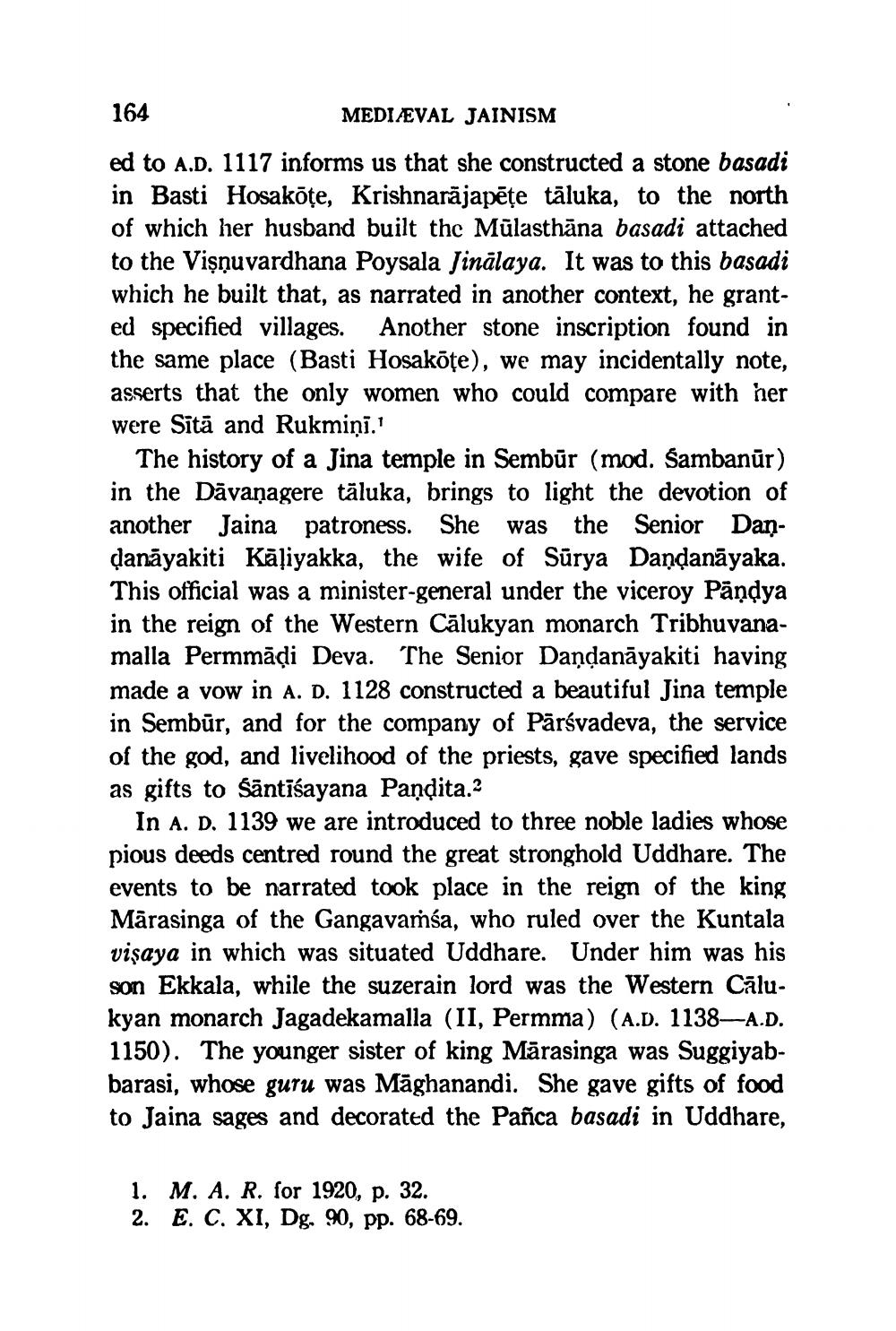________________
164
MEDIEVAL JAINISM ed to A.D. 1117 informs us that she constructed a stone basadi in Basti Hosakote, Krishnarājapēte tāluka, to the north of which her husband built the Mülasthāna basadi attached to the Vişnuvardhana Poysala Jinalaya. It was to this basadi which he built that, as narrated in another context, he granted specified villages. Another stone inscription found in the same place (Basti Hosakoțe), we may incidentally note, asserts that the only women who could compare with her were Sītā and Rukmiņi.'
The history of a Jina temple in Sembūr (mod. Sambanūr) in the Dāvanagere täluka, brings to light the devotion of another Jaina patroness. She was the Senior Dandanāyakiti Kāļiyakka, the wife of Sūrya Dançanāyaka. This official was a minister-general under the viceroy Pandya in the reign of the Western Cālukyan monarch Tribhuvanamalla Permmādi Deva. The Senior Daņdanāyakiti having made a vow in A. D. 1128 constructed a beautiful Jina temple in Sembūr, and for the company of Pārsvadeva, the service of the god, and livelihood of the priests, gave specified lands as gifts to śāntīšayana Pandita.
In A. D. 1139 we are introduced to three noble ladies whose pious deeds centred round the great stronghold Uddhare. The events to be narrated took place in the reign of the king Mārasinga of the Gangavamsa, who ruled over the Kuntala vişaya in which was situated Uddhare. Under him was his son Ekkala, while the suzerain lord was the Western Cālukyan monarch Jagadekamalla (II, Permma) (A.D. 1138—A.D. 1150). The younger sister of king Mārasinga was Suggiyabbarasi, whose guru was Māghanandi. She gave gifts of food to Jaina sages and decorated the Pañca basadi in Uddhare,
1. M. A. R. for 1920, p. 32. 2. E. C. XI, Dg. 90, pp. 68-69.




